
Firmware customization has become a core skill in hardware hacking and cybersecurity research. With the right tools, you can push embedded systems beyond their default limitations, unlock hidden features, and even identify security flaws. In this guide, we’ll walk through how to customize firmware using the ESP-01 Wi-Fi module and the CH341A programmer.

The ESP-01 is a compact Wi-Fi module from the ESP8266 family, widely used in IoT projects. Despite its size, it offers robust functionality:
Power Requirements: Operates between 3.0 – 3.6V.
Built-in MCU: Can run as a standalone microcontroller.
Connectivity: Supports IEEE 802.11 b/g/n Wi-Fi at 2.4 GHz.
Security: Provides WPA/WPA2 support for secure communication.
GPIO Pins: Two GPIOs allow interfacing with sensors and peripherals.
Programming Options: Flashable via AT commands or Arduino IDE.
Operating Modes: Works as an Access Point (AP), Station (STA), or both.
Memory: Ships with 1MB of flash, sufficient for lightweight IoT applications.
This makes the ESP-01 an excellent candidate for firmware experimentation.
The CH341A programmer is a low-cost but powerful USB interface tool often used for flashing BIOS chips, recovering bricked devices, and debugging. Here are some essential details:
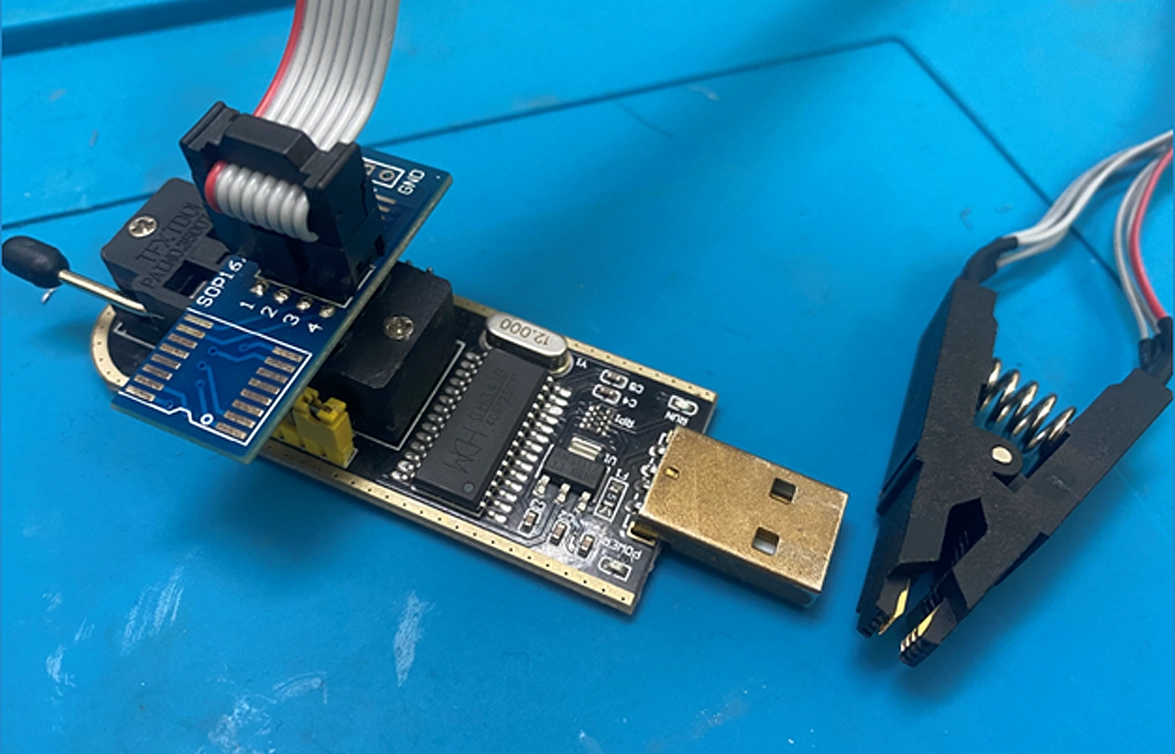
Establish a connection between the ESP-01 module and the Ch341A programmer ensuring proper wiring for communication.

AsProgrammer is a software utility that provides a graphical interface for programming a variety of memory chips through different protocols like SPI, I2C, and MicroWire. It supports a range of devices, including CH341A, UsbAsp, AVRISP-MKII, and others.
Initially developed for the UsbAsp, it has evolved to support additional programmers and is widely used due to its open-source nature and active maintenance. It’s particularly useful for tasks such as reading, erasing, and writing EEPROM and BIOS chips.
See AsProgrammer and other Windows utilities for CH341A · One Transistor.
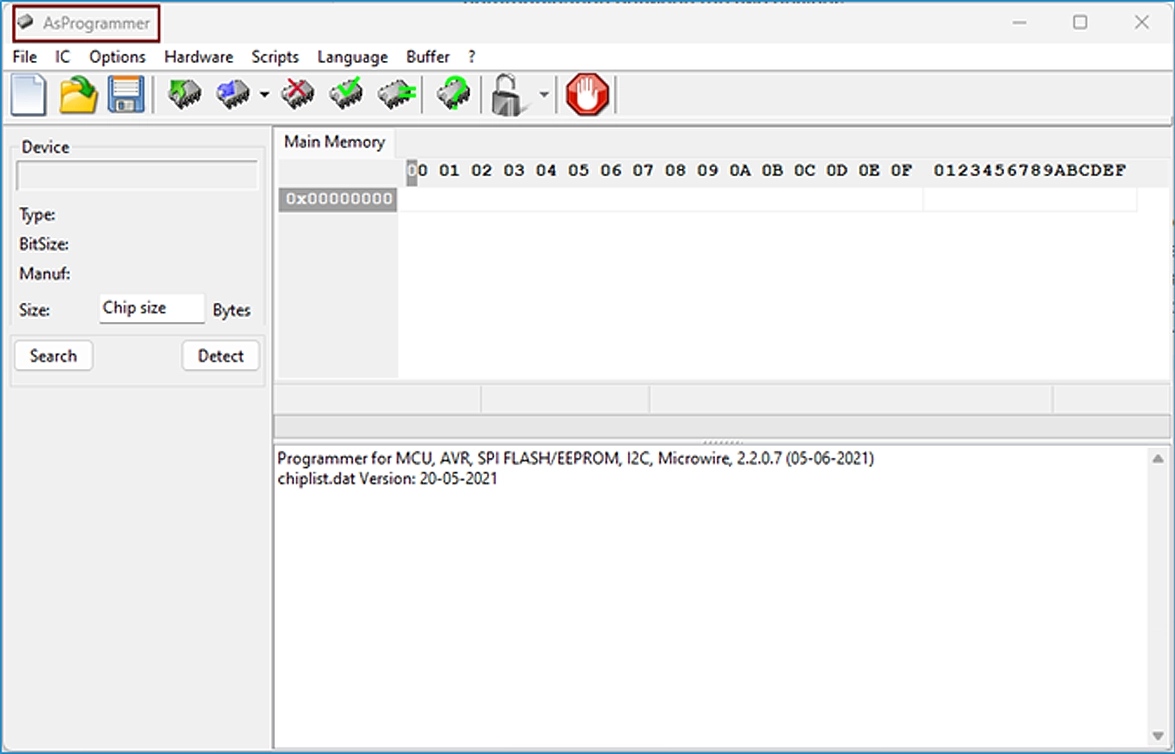
Configure the programming software to establish a connection with the ESP-01 module. Set the appropriate communication parameters and ensure proper detection of the device.
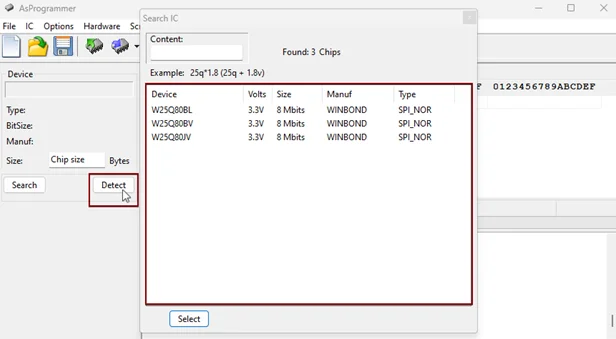
Use programming software to read the binary firmware file from the ESP-01 module and create a backup of the original firmware for further analysis and modification.
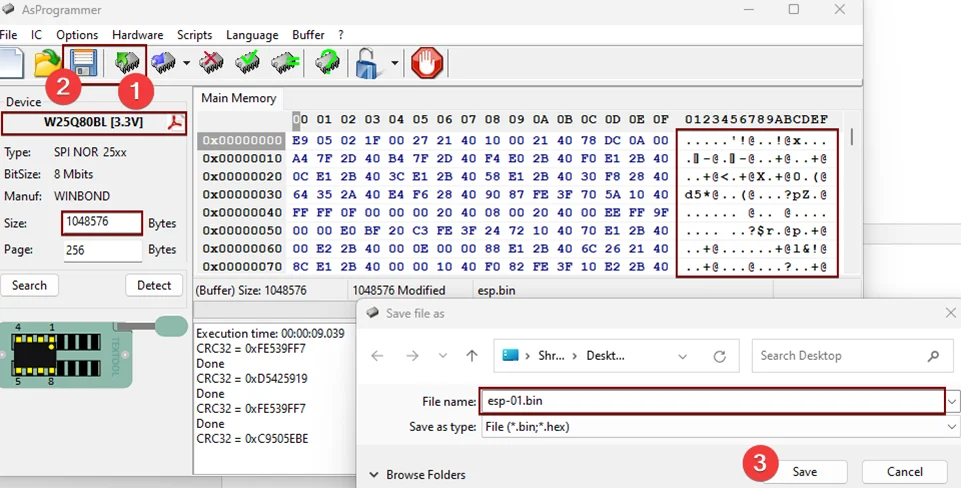
For the analysis of firmware files, it is recommended to extract it or use reverse engineering tools for a thorough binary file analysis. One such tool is Ghidra, but it requires basic knowledge of assembly language. The language selection can be found in the datasheet of the flash chip of the EEPROM chipset. Alternatively, we can use binwalk to determine the file structure and the little or big endian of the bin file.
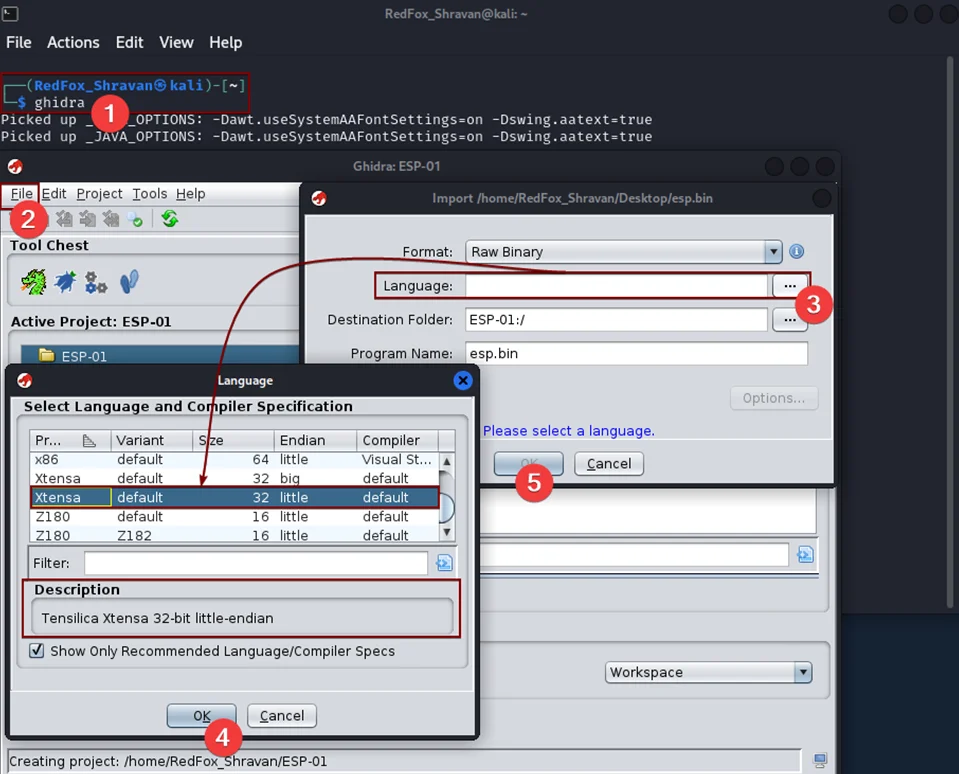
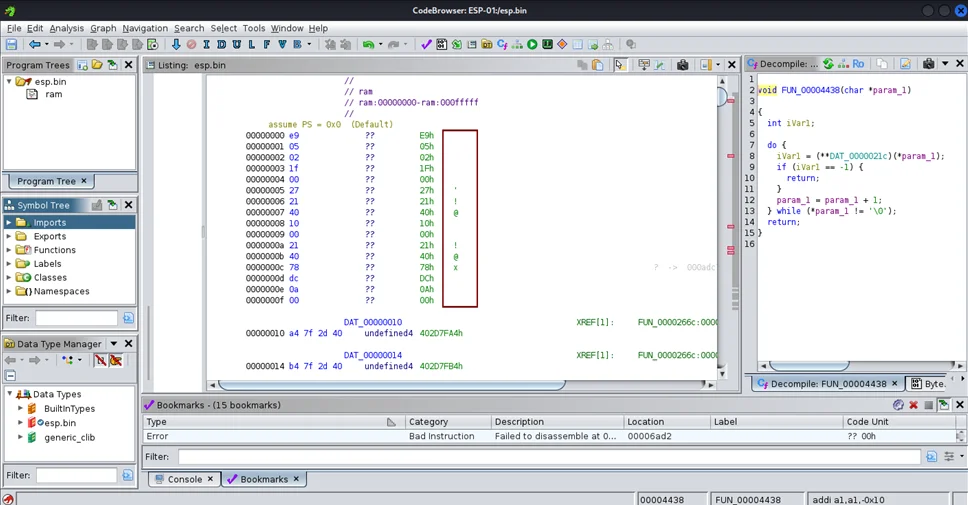
Online Hex Editing: To modify, utilize tools like Hex-Works or HexEd.it. These tools allow you to edit the firmware’s hexadecimal representation, enabling you to change variables, insert custom code, or add sensitive information for analysis. See HexEd.it – Browser-based Online and Offline Hex Editing
and Online Hex editor tool (hex-works.com).
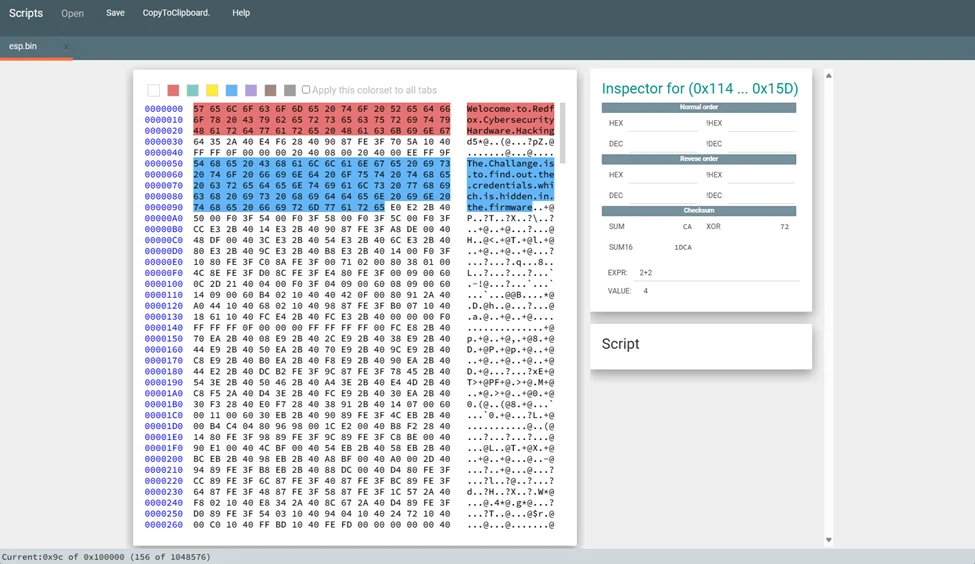
After making the necessary modifications, save the modified binary file and write it back to the ESP-01 module using the programming software. Ensure a successful write operation and verify the integrity of the newly programmed firmware.
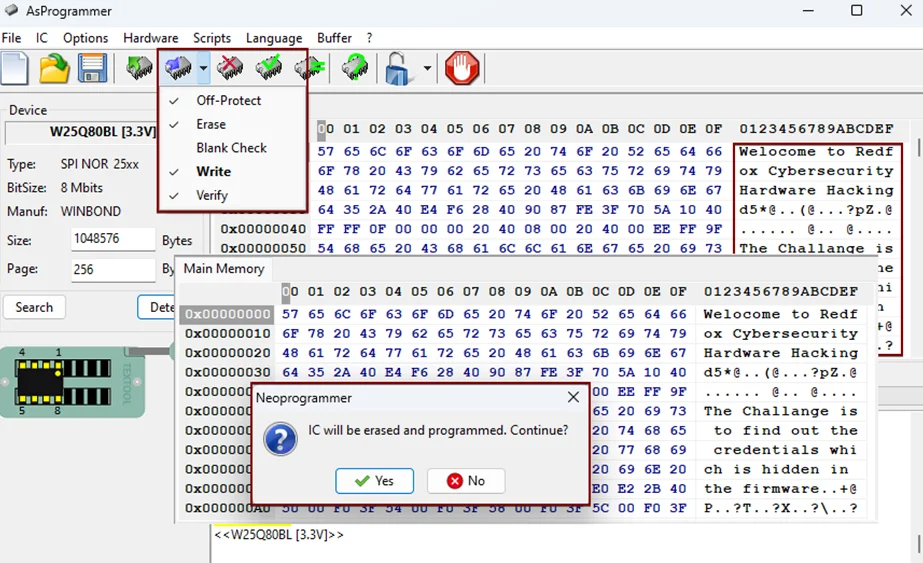
Disconnect and reconnect the ESP-01 module, then re-read the firmware binary file to confirm that the modified firmware was written correctly. Perform additional checks to ensure the integrity and functionality of the firmware.
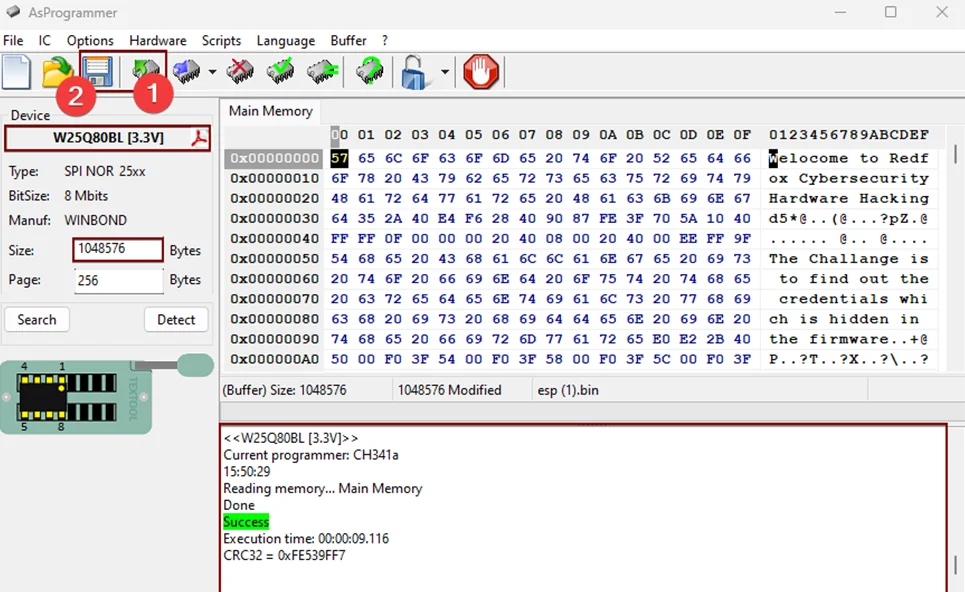
Use reverse engineering tools like Ghidra to analyze the modified firmware further. Cross-verify the changes made and assess the impact on the device’s behavior and functionality.
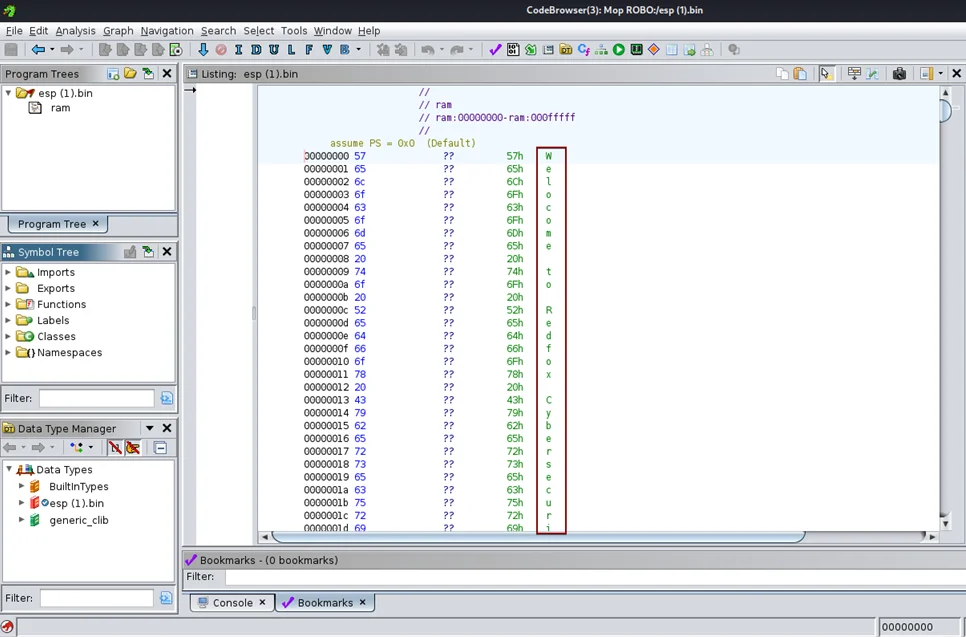

Utilizing cutting-edge technologies like the Ch341A Programmer and ESP-01 Module into firmware development could transform our experience with devices. By taking advantage of their power, developers can bring creativity and innovation to their projects while crafting firmware that not only functions seamlessly but also delight users with its special features and capabilities.
With the Ch341A Programmer, developers gain access to powerful debugging and reverse engineering capabilities, enabling them to identify and rectify vulnerabilities in their firmware more efficiently than ever before. Additionally, the ESP-01 Module offers seamless integration with IoT devices, allowing firmware to interact with the physical world in ways previously unimaginable.
By harnessing the Hex-Works platform, developers can further enhance their firmware with custom hex-based animations and effects, adding a visually stunning dimension to the user experience. Hex-Works gives developers tools that allow them to bring firmware alive through vibrant LED patterns or immersive gaming elements that were once reserved only for science fiction novels.
In conclusion, the combination of the Ch341A Programmer, ESP-01 Module, and Hex-Works opens a world of possibilities for firmware developers. By adopting these technologies, developers can push the limits of what is possible – creating firmware that meets both functional requirements and delights and engages users on an entirely different level. The future of firmware development is bright, and with these tools at our disposal, the possibilities are truly endless.
Redfox Security is a diverse network of expert security consultants with a global mindset and a collaborative culture. With a combination of data-driven, research-based, and manual testing methodologies, we proudly deliver robust security solutions.
Join us on our journey of growth and development by signing up for our comprehensive courses.